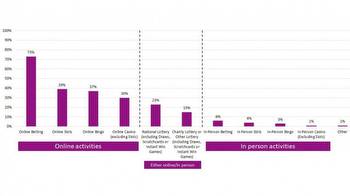Gambling Commission: problem gambling rates remain at 0.2%

This data set is collected through phone interviews using the Problem Gambling Severity Index (PGSI), which consists of three questions scored between “never” and “almost always” that are asked to people who have gambled in the last 12 months.
For the population as a whole, the level of problem gambling was 0.2% for the six months ended 30 June. This is stable compared to the level recorded for the year to date in June 2021, which was 0.4%.
Problem gambling among males surveyed was at 0.3%. This was less than the year before but the Gambling Commission said the change was not statistically significant.
Problem gambling remained completely level among females, staying at 0.1%.
Among 16-24 year olds, the level of problem gambling was at 0.8%, which was up but again the change was not statistically significant.
For 25-34 year olds, problem gambling was 0.3%, while for the 35-44 year old age group it was 0.2%.
No members of the 45-54 year-old age group that responded to the survey were classed as problem gamblers. In total, 596 people from this group were surveyed.
Within 55-64 year olds the total was also 0.2%. For the final group recorded – those over the age of 65 – the percentage was 0.1%.
The survey also revealed that 42.9% of all respondents had participated in at least one form of gambling in the previous four weeks.
The percentage was even higher among 45-54 year olds, hitting 49.1%.
A total of 25.8% of respondents were found to have participated in at least one form of online gambling in the previous four weeks. Again, this was most prevalent – at 33.2% – among 45-54 year olds.
Of all respondents, 27.5% had taken part in the National Lottery in the last four weeks.
The Gambling Commission is currently planning a new methodology to measure prevalence and problem gambling rates. However, this has been criticised due to the fact that the survey appeared to over-index gamblers, which may have inflated the levels of harm reported.





































